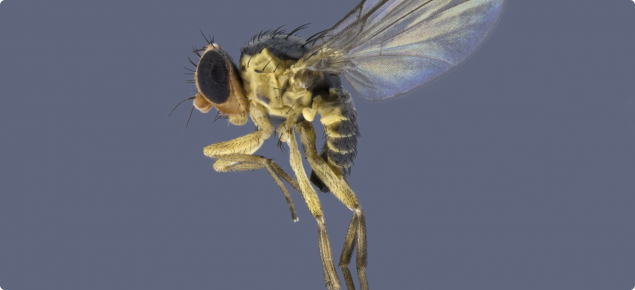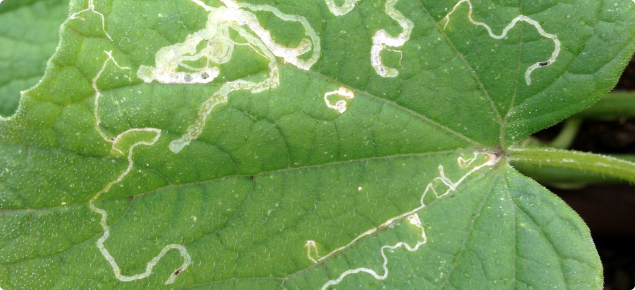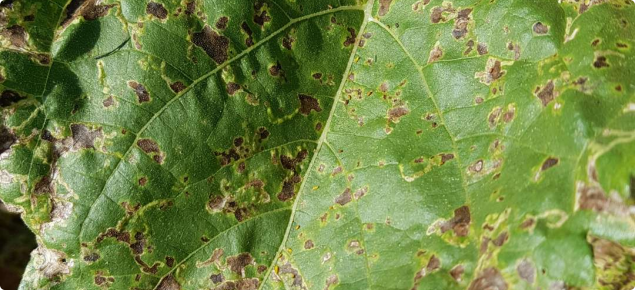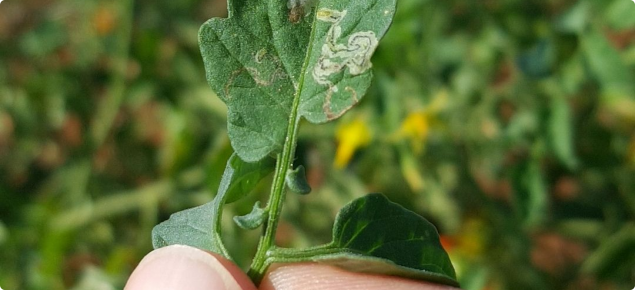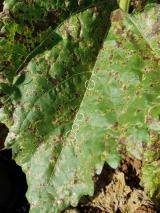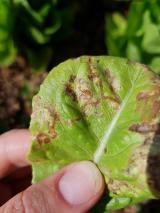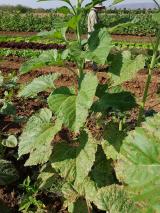2021 detection in Western Australia
The Department of Primary Industries and Regional Development (DPIRD) confirmed the presence of American serpentine leafminer in WA in July 2021 from a sample collected near Kununurra, as part of the Commonwealth’s Northern Australia Quarantine Strategy surveillance program.
This is the first time American serpentine leafminer has been detected in Australia, and is considered a National Priority Plant Pest.
DPIRD is working with industry stakeholders, the Commonwealth Department of Agriculture, Water and the Environment, and other States and Territories to minimise impact of the pest fly and its larvae on Western Australia's primary industries.
This includes liaising with the horticulture industry in the Ord River, Broome, Carnarvon and Geraldton to undertake surveillance, to determine the presence and spread of the pest.
The national technical committee, the Consultative Committee on Emergency Plant Pests, has concluded while eradication may not be technically feasible, due to the pest’s biology, current distribution and wide range of host plants, more surveillance and data was required to make a determination.
The committee agreed that there may be measures that could be undertaken to limit the spread of American serpentine leafminer to other areas of Australia.
Producers, agronomists and homeowners can help by monitoring plants, and reporting any tunnelling leaf damage and suspect flies to DPIRD. Reporting both absence and presence of the pest will support DPIRD’s surveillance efforts. Send in reports to:
DPIRD Pest and Disease Information Service
- +61 (0)8 9368 3080
- padis@dpird.wa.gov.au
MyPestGuideTM
About American serpentine leafminer
American serpentine leafminer is one of a number of well known leafminers from the Agromyzidae family, whose larvae feed internally on plants, often as leaf and stem miners.
American serpentine leafminer is considered a national priority pest as it has a wide host range and can cause significant yield losses and quality reductions. Most other leafminer species in Australia are very host specific that do not impact on horticultural production.
American serpentine leafminer hosts extend to more than 400 species of plants in 28 families, including many economically important vegetables, cut flowers and legume crops.
Hosts include beans, celery, chrysanthemum, cucumber, gerbera, gypsophila, lettuce, onion, potato, tomato, peanuts, soybeans, lentils, lupins, faba beans and chickpeas.
Damage
Damage is caused primarily by larvae feeding under the surface of leaves, and tunnelling (mining) within the leaf tissue. Leaf damage also occurs through puncture wounds from the adult feeding and depositing eggs.
As the damage (mines) age, the leaf surface becomes necrotic (brown patches).
Tunnelling can impede plant photosynthesis, causing leaf death or premature leaf drop, resulting in yield losses, sunburn and reduced quality.
Identification
American serpentine leafminer adult flies are 1-2mm in size, grey-black in colour and distinguished by a prominent yellow area at the base of the wings. Larvae are white-yellow.
Although female adults are larger and more robust than males, their small size still limits field identification. Adult flies of Liriomyza species are very similar in appearance and difficult to distinguish by eye and require molecular diagnostic tests to confirm species.
The larval stages are not usually seen as they remain inside the leaf tissue. An infestation would most likely be detected through the presence of the mines on leaf surfaces.
What to look for
- Trails or 'mines' - light green to white squiggles - on leaf surfaces.
- Trails get wider as the larvae grow.
- Fungal and bacterial infection may occur, as the feeding damage increases susceptibility to secondary infections.
- Leaf surfaces with necrotic (brown) patches.
- Trails may be indistinguishable from the damage of other leafminers – so report any damage, even if unsure.
Spread
The American serpentine leafminer is widespread overseas, being present in North and South America, Asia, Africa, Europe and some Pacific islands.
The fly’s eggs, larvae and pupae can spread through the movement of plant material, soil clothing and equipment.
The adults are capable of flight but are not very active fliers. They tend to fly within a crop but rarely between crops.
Actions to minimise risk
- Check crops regularly.
- Make reports to DPIRD on both absence and presence of leafminer damage or suspect flies.
- Arrive clean, leave clean – good on-farm biosecurity practices are vital to preventing incursions of plant pests and diseases.
Treatment Options
Permits are in place that cover the treatment of a number of exotic leafminer fly species, including American serpentine leafminer. More information is available from the Australian Pesticides and Veterinary Medicines Authority website.
This pest is known to develop resistance so insecticide treatments should be used that incorporate resistance management strategies.
Overseas, management of leafminers, like the American serpentine leafminer, include the use of natural enemies, such as parasitoids that attack larvae, so good management practices should consider the use of pesticides that favour beneficial insects.

